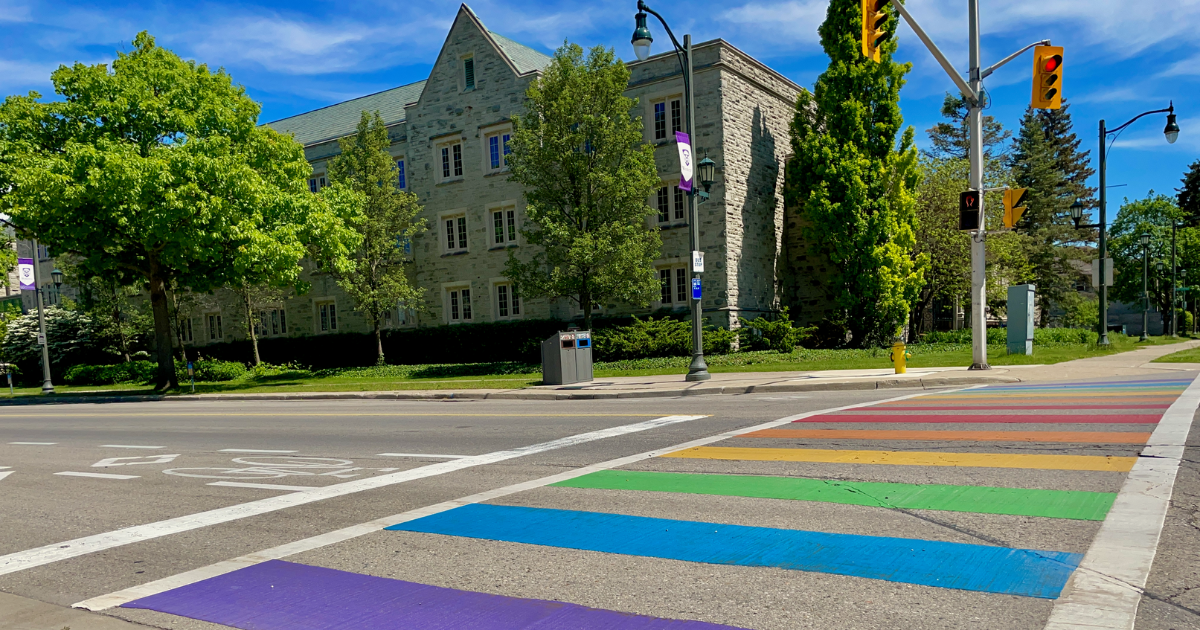Celebrating Pride Month: A Time of Acceptance and Love

Written by: Ammanat Mann, fourth-year Psychology
Photo by: Monique Bettencourt
Pride Month is a time celebrated each June that brings together every person regardless of their identity. Pride Month is a period dedicated to celebrating 2SLGBTQIA+ pride, fostering inclusivity, embracing everyone’s diverse identities, and recognizing the progress and continued challenges the community faces worldwide.
The History of Pride Month
The beginnings of Pride Month stems from the Stonewall Riots at the end of June in 1969. These riots occurred over six days following a police raid on a gay bar, sparking protests that lasted for many days—this moment ignited the uprising of the 2SLGBTQIA+ rights movement. Since then, there have been celebrations each June incorporating parades and forms of education and awareness on the 2SLGBTQIA+ community on a global scale.
What is 2SLGBTQIA+?
One important way to educate ourselves on the 2SLGBTQIA+ community is by understanding what it actually means and what it stands for.
2S- stands for two-spirit, this is a culturally specific identity used by some Indigenous communities to refer to a person who embodies both male and female spirits in their gender identity, spiritual identity, and/or sexual orientation.
L- stands for lesbian, this is a woman who is attracted to another woman.
G- stands for gay, this is a man who is attracted to another man.
B- stands for bisexual, a person who has the potential to be physically, romantically, and/or emotionally attracted to people of more than one gender, not necessarily at the same time, in the same way, or to the same degree. The bi in bisexual refers to genders the same as and different from one’s own gender.
T- stands for transgender, this is a person whose gender identity differs from the sex they were assigned at birth.
Q- stands for queer or questioning, queer is a non-universal term that is used when existing categories are perceived to be too limiting and/or fraught with cultural connotations that individuals may feel do not apply to them. In a setting of support, ‘Questioning’ has come to mean someone who is in a process of exploration and self-definition of their gender identity, gender expression, and sexual orientation.
I- stands for intersex, a person with one or more innate sex characteristics, including genitals, internal reproductive organs, and chromosomes, that fall outside of traditional conceptions of male or female bodies.
A- stands for asexual or 'ace', someone who does not experience sexual attraction, or who does so only under certain situations such as after forming a strong emotional bond with someone (‘demisexual’).
Why It Is Important to Celebrate Pride
Pride month is a critical occasion to celebrate as it demonstrates strength for inclusivity, acceptance, and reflection upon the historical struggles and adversity the 2SLGBTQIA+ community has faced over history. There are a variety of ways in which you can be an ally to the 2SLGBTQIA+ community. The Human Rights Campaign Foundation lists many ways to demonstrate allyship in natural ways along with information on how to support the 2SLGBTQIA+ community. For example, you can create a welcoming and safe environment for 2SLGBTQIA+ people and include 2SLGBTQIA+ identifying individuals in social atmospheres. By doing this you can create an inclusive space that promotes and ensures the acceptance of the 2SLGBTQIA+ community in a natural way. For more ways to be an ally check out The Human Rights Campaign Foundation website Being an LGBTQ+ Ally for more!
Throughout June, Pride parades take place in major cities and thousands of people gather to celebrate Pride. Join us in celebrating love, unity, and the 2SLGBTQIA+ community. Stay tuned to the Western Pride website for details on exciting community events happening throughout the month. For on-campus 2SLGBTQIA+ resources and support, visit uwo.ca/health.
Sources:
Breckon, L. (n.d.). Pride Month: All you need to know about this celebration. Gooroo. https://www.gooroo.com/blog/pride-month/
Human Rights Campaign Foundation. (2022, October). Being an LGBTQ+ ally. Human Rights Campaign Foundation. https://reports.hrc.org/being-an-lgbtq-ally?_ga=2.21140731.1517339004.1717444997-967721943.1717444997
Library of Congress. (n.d.). The History of Pride. Library of Congress. https://www.loc.gov/ghe/cascade/index.html?appid=90dcc35abb714a24914c68c9654adb67
Library of Congress. (n.d.). Today in History - June 28. Library of Congress. https://www.loc.gov/item/today-in-history/june-28/
Women and Gender Equality Canada. (2022, August 28). 2SLGBTQIA+ terminology - glossary and common acronyms. Government of Canada https://www.canada.ca/en/women-gender-equality/free-to-be-me/2slgbtqi-plus-glossary.html
WorldStrides. (2023, May 31). Celebrating pride, being an ally, and creating inclusive classrooms all year round. WorldStrides. https://worldstrides.ca/blog/pride/
GLAAD. (2024). GLAAD media reference guide- 11th edition- glossary of terms: LGBTQ. GLAAD. https://glaad.org/reference/terms
GLAAD. (2024). GLAAD media reference guide- 11th edition- glossary of terms: Transgender. GLAAD. https://glaad.org/reference/trans-terms
GLAAD. (2024). GLAAD media reference guide- 11th edition- glossary of terms: Bisexual people. GLAAD. https://glaad.org/reference/bisexual/?gad_source=1&gclid=CjwKCAjwmYCzBhA6EiwAxFwfgHkAUVEZwK49ZB7GeT15t5fHWu_awPHmf81F6MNXaAS6VJBiAN1S8RoCew0QAvD_BwE
Published on

